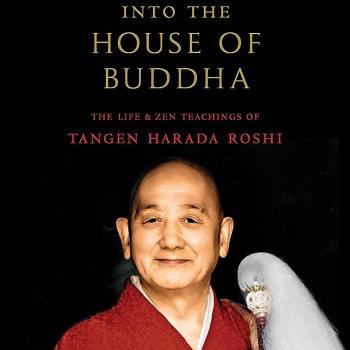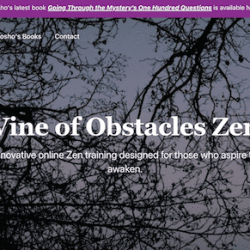It’s snowing in White Bear. Around 8 inches expected by morning. The blog dog (as one student called Bodhi) and I just got in from walking and (almost) daily photo shoot. Today’s surprise was how difficult it is to capture snow. The above shot was much better than the other half dozen shots.
Got me reflecting on the breath and zazen.
I also began practice following the breath, as I mentioned in a comment to a recent post. After a lot of work, I was feeling really quite pleased to be able to follow the breath for a long period of time – like a day or so if memory serves (note to self: usually memory serves a self-serving agenda). Anyway, in a sesshin after a few years of sitting quite a lot, morning and evening most days for about 90 minutes and monthly sesshin, even a flying monkey wild fox like me had a long stretch of quiet.
So I went to dokusan and reported this. Katagiri Roshi kept his downward stare and inverted half-moon lips and said simply, “Zazen is not to follow the breath.”
Or to paraphrase the previous post, breath is not inside or outside. Breath is right in the midst of the functioning of zazen. You think that by zazen you will become the breath. At that time, breath is already outside. When you feel breath by zazen you feel breath inside. But this isn’t real breath. Next moment it disappears. Real breath is blooming from moment to moment, not in the idea, but in the midst of the process of zazen.
Dogen’s teacher, Rujing, had this to say about breath (Dogen’s Extensive Record #390):
“Breath enters and reaches the tanden [hara], and yet there is no place from which it comes. Therefore, it is neither long nor short. Breath emerges from the tanden [hara], and yet there is nowhere it goes. Therefore it is neither short nor long.”
This is very important in following the breath – breaking your ideas about what the breath is and what the breather is. Rujing demonstrates here how contemplating the breath can become the groundless ground for insight. It ain’t coming from anywhere or going anywhere, is neither long nor short, and yet something is happening.











